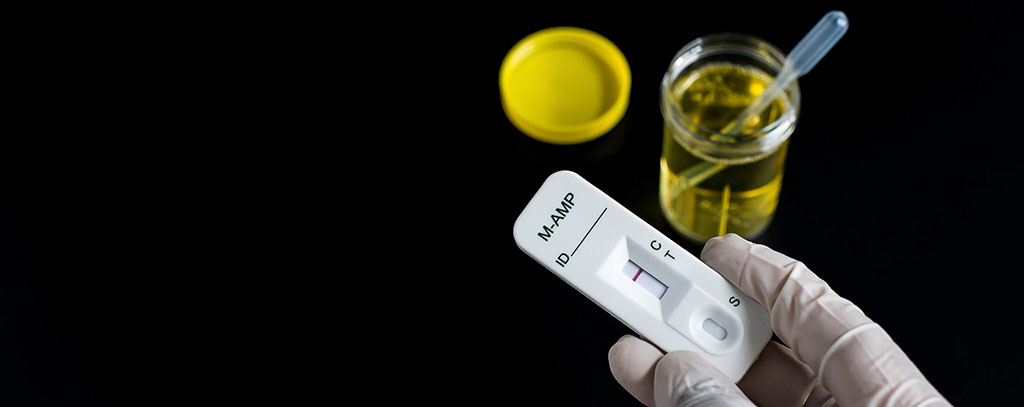


How to Administer a Saliva Drug Test: A Step-by-Step Guide
July 14, 2023


What Does a 15 Panel Drug Test Test For? Comprehensive Guide
July 15, 2023Ensuring the safety and productivity of employees often involves monitoring potential substance abuse. This is where knowing how to read a drug test cup becomes an essential skill.
In this blog post, we'll explore various aspects of urine drug testing, including understanding control (C) and test (T) regions on the test strip. We'll also discuss proper collection procedures for accurate results, addressing false positives from prescription medications or over-the-counter drugs that may affect outcomes.
Finally, we will delve into alternative drug testing methods available in the workplace such as blood testing or saliva-based tests.
So buckle up as we guide you through reading a drug test cup like a pro and ensure your company maintains a safe working environment for all employees!
The Growing Popularity of Drug Test Cups
Maintaining a drug-free workplace is essential for any business, so the Onsite Urinalysis Test Cups from Halux Diagnostic have been gaining traction to make sure employees are not impaired while on duty. That's where Halux Diagnostic comes in with their Onsite Urinalysis Test Cups - designed to make drug testing easier and more efficient than ever before.
In recent years, these handy little cups have become increasingly popular among companies looking to ensure employees are not under the influence while on the job.
Why Are Drug Test Cups So Popular?
Well, for starters, they're incredibly easy to use. No need for complicated lab equipment or waiting days for results - just collect a urine sample and get instant answers. This makes them perfect for random testing policies that help keep workplaces safe from substance abuse.
How Do They Work?
You might be wondering how something so simple can provide accurate test results. The secret lies in the test strips inside each cup that detect specific drugs tested within minutes after collecting a urine sample.
What Drugs Can Be Tested For?
- Opiates (OPI)
- Marijuana (THC)
- Cocaine (COC)
- Methamphetamine (mAMP/ MET)
- Benzodiazepines (BZO)
Are There Any Additional Benefits To Using A Drug Test Cup?
Definitely. For one, they're designed to ensure an unadulterated sample is collected by including a temperature strip that helps verify the urine's authenticity. This means you can trust the results and make informed decisions about your employees' well-being.
How Can I Get Started With Drug Test Cups In My Workplace?
It's simple - just order a drug test kit from Halux Diagnostic and follow their easy-to-understand instructions for use. You'll be on your way to maintaining a safe work environment in no time.
Ready To Give It A Try?
If you're looking for an effective solution to implement drug testing policies at your workplace, look no further than Halux Diagnostic's Onsite Urinalysis Test Cups.
Understanding Drug Test Cup Components
Before we dive into the nitty-gritty of reading drug test cups, let's get familiar with their components.
A typical drug test cup consists of two regions: control (C) and test (T). Knowing these regions is crucial for accurate interpretation of results.
Control Region (C)
The control region serves as a built-in quality check to ensure that the drug test is functioning correctly. If a line appears in this area, it means that the urine sample has successfully flowed through the device and reacted appropriately with its reagents.
Test Region (T)
This is where you'll find your actual results. Halux Diagnostic, for example, offers Onsite Urinalysis Test Cups designed to detect various drugs based on specific parameters.
- One Line: A single line next to "T" indicates a positive drug test result - meaning recent drug use has been detected.
- Two Lines: Two lines indicate a negative drug test result - no recent substance abuse was found.
Next, let's look into the correct way to acquire a urine sample.
How to Conduct a Urine Sample Collection
Alright, let's dive into the nitty-gritty of collecting that all-important urine sample.
First and foremost, you'll need a Halux Diagnostic drug test cup, designed for easy detection of drugs in an unadulterated sample.
Now, make sure the person being tested is ready to provide their specimen (no pressure.).
Step #1: Hand over the drug test cup and instruct them to urinate directly into it until they reach the indicated volume marker on its side.
Step #2: Keep an eye on that temperature strip. Step #2: Ensure the sample temperature is within 32°C - 38°C.
Step #3: Once they've provided their sample, have them securely fasten the lid onto the cup. Safety first.
Note: If there are any concerns about tampering or adulteration during collection, consider implementing random testing protocols.
Tips for Ensuring Accurate Results from Your Drug Test Cup
- Maintain privacy: Ensure that employees feel comfortable providing their samples by offering private restrooms or designated areas for this purpose.
- Avoid contamination: Instruct individuals not to touch inside surfaces of cups with hands or foreign objects while providing samples. This helps ensure an unadulterated sample.
- Timing is key: Test the urine sample as soon as possible after collection to avoid any potential degradation of drug levels over time.
And there you have it. A step-by-step guide on how to collect a urine sample for accurate and reliable results from your drug test cup.
Now that we've discussed this key factor, let's proceed to decoding the outcomes.
How to Read a Drug Test Cup
As a company that purchases drug testing supplies, it's important to know how to read a drug test cup. Fortunately, it's a simple process that can be done in just a few steps.
First, it's important to collect a urine sample from the person being tested. Once you have the sample, follow these steps to interpret the results:
Step 1: Count the Lines
Observe the C and T sections of each test strip, noting how many lines appear in both.
Step 2: Interpret the Results
If you see two distinct lines in both the C and T regions, the person being tested has passed - they're negative for that specific drug.
If there's only one line visible in the control region (C), but none or a faint line in the test region (T), this indicates a positive result for recent drug use.
If no lines appear or if there's just one line present in the test region without any sign of life in the control area, then the result is invalid. In this case, it's best to contact Halux Diagnostic's support team.
- Note:
- Always make sure you wait for the full 5-minute read time before making conclusions about results.
- Don't forget about the temperature strips on cups, which help ensure unadulterated samples are used.
- Keep track of the drugs being tested by checking the labels on the cups.
Be wary of drawing conclusions prematurely. It's vital to have a strategy for managing false positives, so as to uphold the SAMHSA guidelines and ensure optimal safety in the workplace.
Consider following the SAMHSA guidelines on workplace drug testing policies and always follow best practices when conducting random tests.
Remember, maintaining a safe work environment is everyone's responsibility. Let's make sure we're doing our part.
Considering False Positives in Workplace Drug Testing Policies
False positives can be a real headache for companies that implement drug testing policies. These unexpected results may lead to unnecessary stress and confusion among employees and management alike. To reduce the occurrence of false positives, it is important to be aware of their potential causes and how best to address them.
Potential Causes of False Positives
Certain medications or medical conditions might trigger a positive result on a drug test even if the person hasn't consumed any illicit substances recently. Some cold medicines, for instance, may have components that lead to a false positive on amphetamine or opiate screenings.
Actionable Steps to Address False Positives
- Educate your employees: Make sure they are aware of which medications or substances might interfere with their drug tests. Encourage open communication about prescription medication use before administering tests.
- Confirm initial results: If an employee has tested positive but claims not to have used drugs recently, consider sending the urine sample off for further laboratory analysis. This process will help confirm whether there was indeed recent substance abuse or if it was just an unfortunate case of cross-reactivity with other compounds present in the urine sample (source).
- Create clear guidelines: Establish protocols within your company regarding what steps should be taken following a positive drug test result. These guidelines should include procedures for addressing potential false positives as well as consequences for confirmed cases of substance abuse at work.
- Maintain open communication: Encourage employees to come forward if they believe their test results might be inaccurate. This openness will help foster a sense of trust and understanding between management and staff, ultimately leading to a healthier work environment.
In conclusion, false positives can be frustrating for both employers and employees alike. Though it may be vexing, taking the time to grasp potential origins of false positives and applying measures to handle them suitably will guarantee that your business's drug testing regulations remain impartial and precise for everyone concerned.
FAQs about How to Read a Drug Test Cup
How are Drugs Measured in Drug Tests?
Drug tests measure specific metabolites present in an individual's bodily fluids such as urine or saliva. These metabolites are produced when drugs break down inside one's body after consumption. Drug testing kits measure concentrations of these substances using immunoassay techniques, which involve antibodies that bind to target molecules.
How Long Does Pee Stay Good for a Drug Test?
A collected urine sample should be tested as soon as possible but can generally remain stable at room temperature for up to two hours before it starts degrading due to bacterial growth and chemical changes (source). If necessary, refrigerate samples at temperatures between 2-8°C (35-46°F), allowing them to last up to seven days without significant degradation.
What Temperature Does Urine Have to Be for a DOT Drug Test?
The Department of Transportation (DOT) requires that fresh human urine samples must fall within a temperature range of 32-38°C (90-100°F). This ensures that the sample is fresh and has not been tampered with. If a urine specimen falls outside this range, it may be considered invalid or adulterated (source).
Conclusion
Drug test cups are an essential tool for companies that aim to maintain a drug-free workplace. It is crucial to understand the control and test regions of the cup to determine accurate results. Proper collection procedures must be followed, and false positives from prescription or over-the-counter medications should be addressed.
In addition to drug test cups, alternative testing methods such as blood testing, breathalyzer testing, and saliva-based tests can also provide reliable results.
If you need high-quality drug testing supplies that are easy to use and provide accurate results, visit Halux Diagnostic. At Halux Diagnostic, we have created products with your safety in mind to ensure a secure work atmosphere for all personnel.





